Jason Anderson
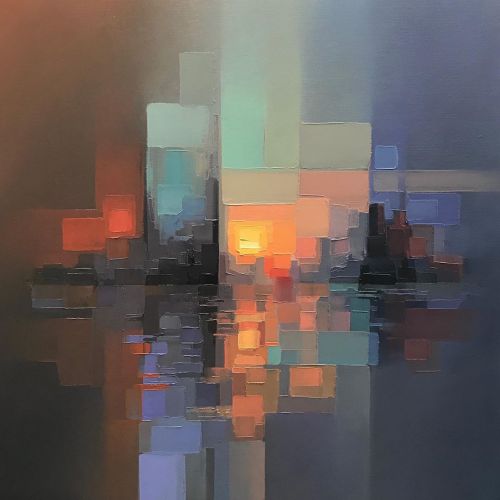
Jason Anderson
British artist Jason Anderson creates colorful abstract paintings composed of pixelated swatches of pastel-toned oil paint. Up-close, the artist’s paintings look like blocky layers of shapes and color; but, from afar, his scenes—featuring cityscapes, roads, trains, and marinas—are revealed.


Anderson began his career as a stained glass apprentice, where he worked on restoring the windows of cathedrals. He soon progressed onto designing the glass murals himself, where he learned how to break down subject matter into “jigsaws” of colored sections. This approach still shines through in his paintings today—complex scenes are brought to life with simple shapes and careful consideration to hue and tone.







More Posts from Astrorelations and Others
Tesserac t Visio n


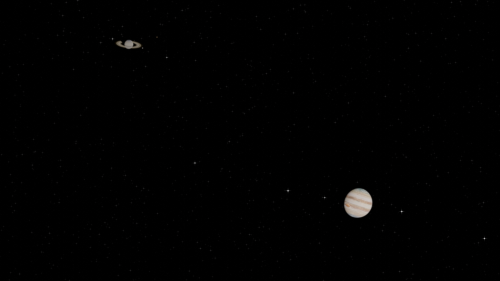
Jupiter and Saturn
21.12.2020…. the closest approach for 800 years
https://www.youtube.com/watch?v=G27G_JBlvIw
Keep reading
Hi guys, I made an instagram with images of space (nebulae, galaxies, etc) @wonders_of_the_cosmos | Twitter: @wotcosmos


Evolving every moon every sun
. free yourself to evolve
. liberté-se para evoluir
Energy formulas for imaginary matter
An imaginary matter is the mirror image of the corresponding real matter.
Energy formulas for real matters are still useful for imaginary matters if an observer is in the imaginary space. Then how are energy formulas for imaginary matters expressed if an observer who is in the real space could observe imaginary matters?
Suppose that observer A is in the real space and observer B is the mirror image of observer A in the imaginary space.
The space velocity vector and spacetime velocity vector measured by observer A are the opposite of those measured by observer B in the same way that the left and right sides of the mirror image are swapped, i.e., the space speed measured by observer A is constant at the maximum speed c and the spacetime speed measured by observer A is variable.
The relationship of these velocity vectors are shown in the figure below.

Assuming an imaginary matter moves at speed vi measured by observer B, the space speed vsB, time speed vtB and spacetime speed vstB measured by observer B are as follows:

On the other hand, the space speed vsA, time speed vtA and spacetime speed vstA measured by observer A are as follows:

The following equation holds true for time speed.

Hence, the following formula is obtained for the spacetime speed measured by observer A.

The spacetime speed measured by observer A is smaller as the space speed measured by observer B is larger.
Real matters cannot move at the speed of light at the cost of having mass, while imaginary matters also have mass but move at the speed of light.
Mass energy vector is in the time axis of the space-time complex plain and the time axis is common between the real space and imaginary space. Hence, the magnitude of mass energy vector is invariant for the spatial inversion. The imaginary space axis is at right angles to the real space axis in the space-space complex plain.

Therefore, the mass energy of imaginary matter measured by observer A is expressed as follows:

where “−i” is the operator that transfers from the real space to the imaginary space and m is mass.
The energy formulas for real matters in the range of v>c express those for imaginary matters, but the energy formulas of total energy and momentum energy are exchanged for each other. Therefore, the momentum energy Es and total energy Est of imaginary matter measured by observer A are expressed as follows:

For an imaginary matter at rest (vi = 0),

The space speed of imaginary matters is always zero because they have no momentum energy. Hence, an imaginary matter is equivalent to the real matter with (square root of 2) times the mass of the imaginary matter, moving at the speed of light.
The space velocity and time velocity of real matter, light and vacuum energy and those of imaginary matter converted into the real space are arranged below.
・Real matter : relative space speed and relative time speed ・Light : absolute space speed and no time velocity ・Vacuum energy : neither space velocity nor time velocity ・Imaginary matter : absolute space speed and absolute time speed
crazyest new anime
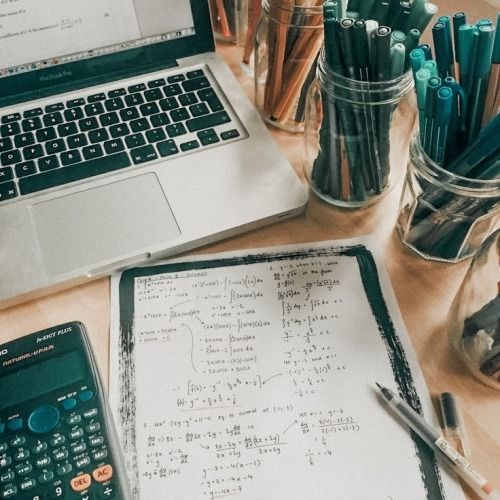
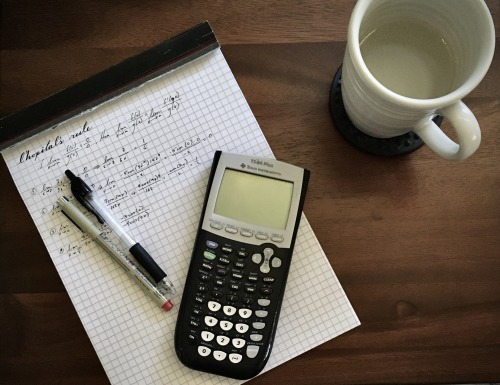
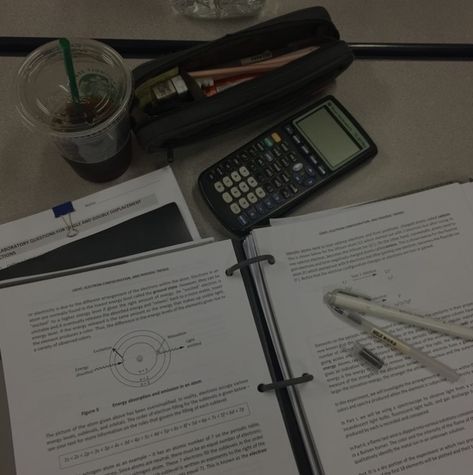

the mathematics students
crisp, grey mornings
the scratch of pencil on graph paper
working through complex problems just for the joy of it
baroque era piano music playing in the background
a love of patterns and puzzles
writing out your favorite proofs again and again
advanced math courses, sitting with the upperclassmen
the dusty green of an empty chalkboard
formulas scribbled on your hand in pen
going through a problem again and again until you understand it fully
carefully sketched graphs
short, bitten nails
ice cold water
hands marked with graphite
using math to take apart the world around you
doodling fractals on scratch paper
memorizing digits of pi just to show off to your friends
the moment of clarity when a problem fits together
hair clipped back out of your face
looking for fibonacci sequences in nature
watching a long and complicated equation simplify down to something short and compact

1,000 Years of Scientific Texts From The Islamic World Are Now Online
Between the 9th and 19th centuries, Arabic-speaking scholars translated Greek, Latin and even Sanskrit texts on topics such as medicine, mathematics and astronomy, fostering a vibrant scientific culture within the Islamic world.
The library, a joint project of the British Library and the Qatar Foundation, offers free access to 25,000 pages of medieval Islamic manuscripts. Among some of the most significant texts:
The Book of Knowledge of Ingenious Mechanical Devices (1206 A.D.), which was inspired by an earlier, 9th-century translation of Archimedes’ writings on water clocks. Devices such as the “Elephant Clock” were the most accurate time-keeping pieces before the first pendulum clocks were built in the 17th century by the Dutch scientist Christiaan Huygens.
This is one of the only three recorded copies of an influential treatise on the construction and use of astrolabes by Abū al-Rayḥān Muḥammad ibn Aḥmad al-Bīrūnī (973-1048), containing 122 diagrams.
See more manuscripts at the Qatar Digital Library.
[via io9]


Raging Bear Creek Falls by Andrew Morse
-
 thehappiestmistake reblogged this · 3 weeks ago
thehappiestmistake reblogged this · 3 weeks ago -
 kaysoncoffee reblogged this · 3 weeks ago
kaysoncoffee reblogged this · 3 weeks ago -
 kaysoncoffee liked this · 3 weeks ago
kaysoncoffee liked this · 3 weeks ago -
 drewzelle reblogged this · 4 weeks ago
drewzelle reblogged this · 4 weeks ago -
 strangeandgloriousstarlight reblogged this · 1 month ago
strangeandgloriousstarlight reblogged this · 1 month ago -
 dragongirlbytes reblogged this · 1 month ago
dragongirlbytes reblogged this · 1 month ago -
 dragongirlbytes liked this · 1 month ago
dragongirlbytes liked this · 1 month ago -
 highway-stars liked this · 1 month ago
highway-stars liked this · 1 month ago -
 riotouseaterofflesh reblogged this · 1 month ago
riotouseaterofflesh reblogged this · 1 month ago -
 nikthecowboy liked this · 1 month ago
nikthecowboy liked this · 1 month ago -
 toothpickyswag reblogged this · 1 month ago
toothpickyswag reblogged this · 1 month ago -
 toothpickyswag liked this · 1 month ago
toothpickyswag liked this · 1 month ago -
 qlex-jd reblogged this · 1 month ago
qlex-jd reblogged this · 1 month ago -
 pinnerswitch reblogged this · 1 month ago
pinnerswitch reblogged this · 1 month ago -
 thedoctorworm reblogged this · 1 month ago
thedoctorworm reblogged this · 1 month ago -
 bleebadeegirl reblogged this · 1 month ago
bleebadeegirl reblogged this · 1 month ago -
 treasuredthings reblogged this · 1 month ago
treasuredthings reblogged this · 1 month ago -
 violinolistdavey reblogged this · 1 month ago
violinolistdavey reblogged this · 1 month ago -
 eclectichellmouth reblogged this · 1 month ago
eclectichellmouth reblogged this · 1 month ago -
 startedstorming reblogged this · 2 months ago
startedstorming reblogged this · 2 months ago -
 bluefoxdandelion reblogged this · 2 months ago
bluefoxdandelion reblogged this · 2 months ago -
 therealandeborg liked this · 2 months ago
therealandeborg liked this · 2 months ago -
 ok-pop-1 liked this · 2 months ago
ok-pop-1 liked this · 2 months ago -
 slow-burn-il reblogged this · 2 months ago
slow-burn-il reblogged this · 2 months ago -
 ruru124 liked this · 2 months ago
ruru124 liked this · 2 months ago -
 theoretical-mycologist reblogged this · 2 months ago
theoretical-mycologist reblogged this · 2 months ago -
 relatablepicturesoftinywhalesfin liked this · 2 months ago
relatablepicturesoftinywhalesfin liked this · 2 months ago -
 chickenlover-19 liked this · 2 months ago
chickenlover-19 liked this · 2 months ago -
 haloburns reblogged this · 2 months ago
haloburns reblogged this · 2 months ago -
 i-am-the-egg liked this · 2 months ago
i-am-the-egg liked this · 2 months ago -
 likealimestonecowboy reblogged this · 2 months ago
likealimestonecowboy reblogged this · 2 months ago -
 spite73 liked this · 2 months ago
spite73 liked this · 2 months ago -
 makewavesandwar reblogged this · 2 months ago
makewavesandwar reblogged this · 2 months ago -
 makewavesandwar liked this · 2 months ago
makewavesandwar liked this · 2 months ago -
 jadeeatsrainbows reblogged this · 2 months ago
jadeeatsrainbows reblogged this · 2 months ago -
 auzrithewitch liked this · 2 months ago
auzrithewitch liked this · 2 months ago -
 riotouseaterofflesh reblogged this · 2 months ago
riotouseaterofflesh reblogged this · 2 months ago -
 marshmallowdoritos reblogged this · 2 months ago
marshmallowdoritos reblogged this · 2 months ago -
 kaavoken reblogged this · 2 months ago
kaavoken reblogged this · 2 months ago -
 joannalauwie liked this · 2 months ago
joannalauwie liked this · 2 months ago -
 syncallio liked this · 2 months ago
syncallio liked this · 2 months ago -
 itsmooniie reblogged this · 2 months ago
itsmooniie reblogged this · 2 months ago -
 tadrinth reblogged this · 2 months ago
tadrinth reblogged this · 2 months ago -
 bunnyliquefaction liked this · 2 months ago
bunnyliquefaction liked this · 2 months ago -
 siyuki1234 reblogged this · 2 months ago
siyuki1234 reblogged this · 2 months ago -
 doubledexterity reblogged this · 2 months ago
doubledexterity reblogged this · 2 months ago -
 doubledexterity liked this · 2 months ago
doubledexterity liked this · 2 months ago -
 ilegalname reblogged this · 2 months ago
ilegalname reblogged this · 2 months ago -
 barsom-fearce reblogged this · 2 months ago
barsom-fearce reblogged this · 2 months ago
